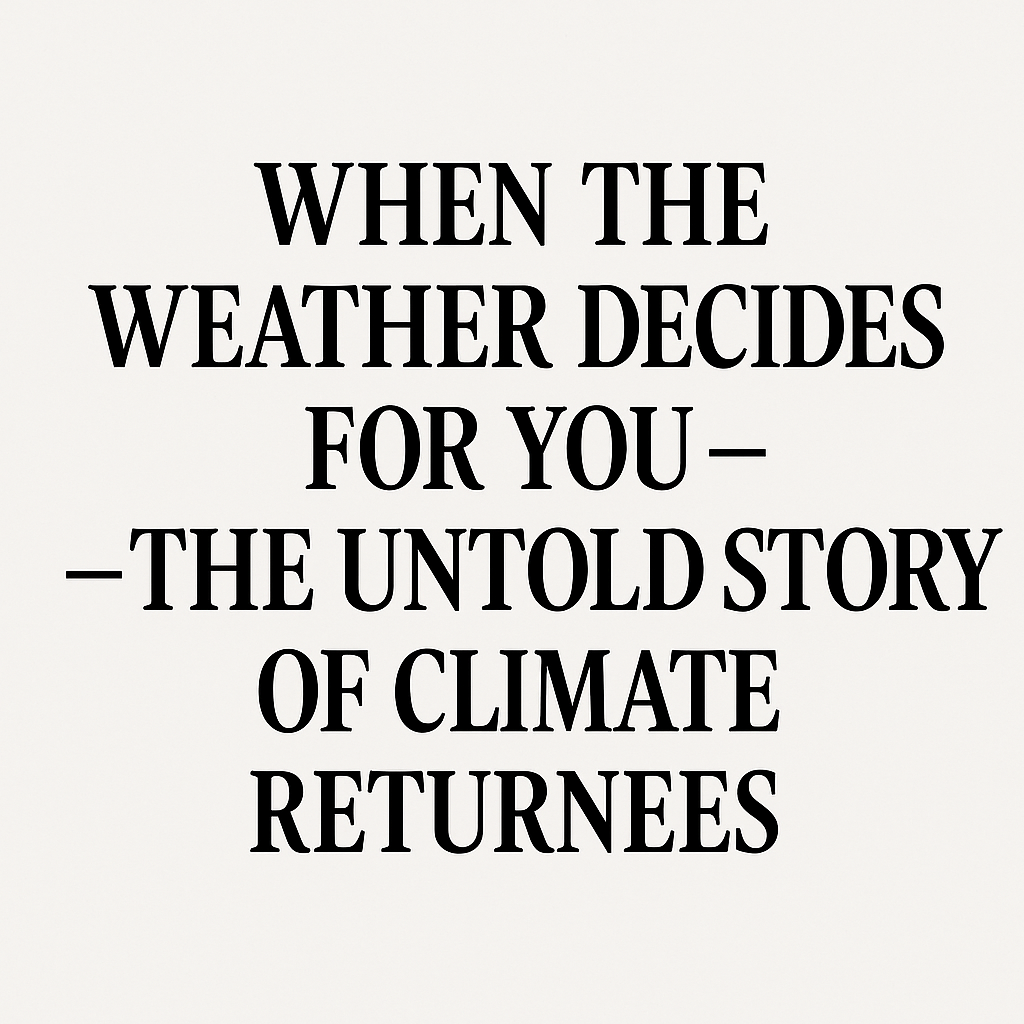In recent years, much attention has been paid to migrants fleeing conflict or poverty, but one growing phenomenon remains largely in the shadows: climate returnees. These are migrants who, after fleeing their home countries in search of safety and opportunity, find themselves forced to return, not because of deportation, but because the host countries are becoming just as dangerous, if not more so, due to climate-related disasters.
Across parts of Sub-Saharan Africa and Southeast Asia, rising heatwaves, droughts, and floods are eroding jobs and living conditions for migrants working in agriculture, construction, and informal sectors. In southern Europe, for example, many North African migrants who labored in vineyards and olive fields are now heading back, not because they want to, but because wildfires, extreme heat, and water scarcity have made their work impossible.
“I didn’t think I’d be going back so soon,” says Ibrahim, a 29-year-old Senegalese man who worked seasonal farm jobs in Spain. “But after last summer’s wildfires destroyed the land, there was no more work. I had no choice but to leave.”
This form of involuntary return migration is not being tracked seriously by many governments or international agencies. It exists in a grey area—neither a formal deportation nor a voluntary return. Many climate returnees return to countries already grappling with their own environmental crises, only to find new struggles waiting: drought-affected farmlands, food insecurity, and political instability.
According to a recent report by the Internal Displacement Monitoring Centre, nearly 32 million people were displaced in 2024 due to weather-related events. While internal displacement figures are tracked, returnees—especially those coming back after failing to rebuild their lives abroad—are left uncounted.
Why does this matter? Because policies on climate change and migration still operate in silos. Many development programs are not designed to support people returning from abroad due to climate collapse, and aid rarely reaches them. There’s also a psychological toll: returnees often feel like they’ve failed both at home and abroad.
Experts warn that as global warming continues, we will see more of these silent returns. “We’re entering an era where both origin and destination countries will become climate hotspots,” says environmental migration researcher Dr. Hala Muneer. “Without coordinated action, we risk creating a loop of displacement and return with no real solution.”
This new wave of migration challenges how we define refugees, migrants, and returnees. Climate returnees are not just statistics—they are people whose lives are being reshaped by forces beyond their control. Their stories deserve more than silence.
The question now is: how do we prepare for a future where the weather decides who stays and who goes?

